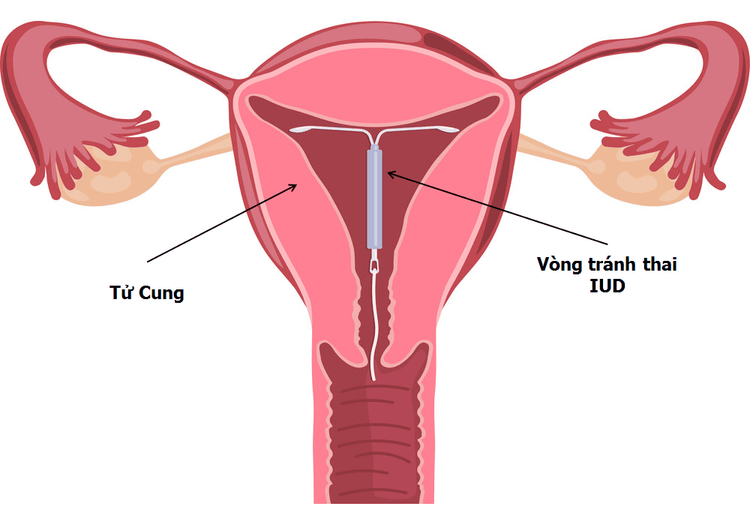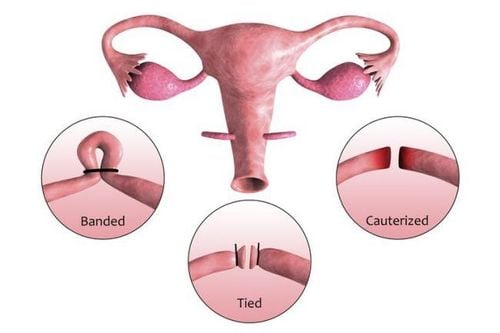This is an automatically translated article.
The article is expertly consulted by Master, Doctor Le Nhat Nguyen - Obstetrician-Gynecology Specialist - Vinmec Danang International General Hospital. Doctor has more than 20 years of experience in the field of Obstetrics and Gynecology.An IUD is a device that is inserted into the uterus to prevent an egg from implanting in the lining of the uterus, and also interferes with fertilization. The method is widely used because its effectiveness in preventing pregnancy can reach 98%.
1. Notes in IUD insertion
Not everyone can wear an IUD. If not suitable, it will cause women to have abdominal pain, back pain or heavy menstrual bleeding, and may even cause anemia. If during the period of wearing the ring, there is an infection of the genital tract, the infection can follow the ring to spread upward, causing widespread inflammation and possibly an ectopic pregnancy. Therefore, before the ring is inserted, women need to have a gynecological examination to promptly detect infections and treat them. During the period of wearing the ring, if you see symptoms of infection such as yellow, green, vaginal discharge, unpleasant odor, itchy vulva, you should go to the doctor immediately for treatment.Trắc nghiệm: Bạn có hiểu đúng về dấu hiệu mang thai sớm?
Các dấu hiệu mang thai sớm không phải chỉ mỗi trễ kinh mà còn có rất nhiều dấu hiệu khác như xuất huyết âm đạo, ngực căng tức,… Điểm xem bạn biết được bao nhiêu dấu hiệu mang thai sớm thông qua bài trắc nghiệm này nhé!
2. Time to put the IUD
The appropriate time to insert an IUD is right after the menstrual period is over. For women after vaginal delivery, the IUD is usually inserted after 6 weeks. For women who have a caesarean section, the time to put the ring will be later, after 3 months or more because the uterus needs more time to heal, the sutures also dissolve into the uterine muscle. For women who have had an abortion, after a miscarriage, they should wait until their periods return to regularity before inserting an IUD.
3. IUD insertion procedure
Step 1: Before placing an IUDBefore deciding to put an IUD, learn carefully the advantages and disadvantages of this method and compare it with yourself.
Step 2: Insert IUD
The doctor will insert the IUD by inserting 2 fingers into the vagina and the other hand the doctor will place on the patient's abdomen to feel the pelvic organs.
From there, the doctor will determine the position and size of the uterus to place the IUD. The doctor will open the vagina using a medical instrument (speculum). It is then disinfected to clean the vagina and reduce the risk of infection. If necessary, an anesthetic may be given. Finally, the IUD is threaded through the cervix. When it reaches the uterus, the IUD opens up into a T shape.
Although it may feel a little uncomfortable to put in place, the whole procedure takes only a few minutes. Most women will be comfortable and able to resume daily activities after the IUD is inserted. After wearing will be suggested to bring tampons in case of bleeding after insertion.
Step 3: After inserting the IUD
If you bleed a lot, see your doctor for an examination. The IUD should be checked monthly to make sure it is still in place. You can also do a self-examination by washing your hands and putting your finger in your vagina until you feel your cervix. If the cord is felt from the cervix, it means the IUD is in the right position. Note that only touch, do not pull the cord out because it may change the position of the IUD.

4. Contraindications for IUD insertion for whom?
Despite many advantages and high rate of contraception, there are contraindications to using an IUD:Pregnancy or suspicion of pregnancy; Have pelvic inflammatory disease, a sexually transmitted disease, or have had them within the previous three months; Genitourinary malignancy; Birth defects in the uterus or fibroids that deform the uterine lumen; Abnormal genital tract bleeding has not been diagnosed or treated. Immediately after abortion or in cases of severe unhealed lesions, uncontrolled bleeding and acute anemia. If you have unusual symptoms, you should be examined and consulted with a specialist.
Please dial HOTLINE for more information or register for an appointment HERE. Download MyVinmec app to make appointments faster and to manage your bookings easily.














